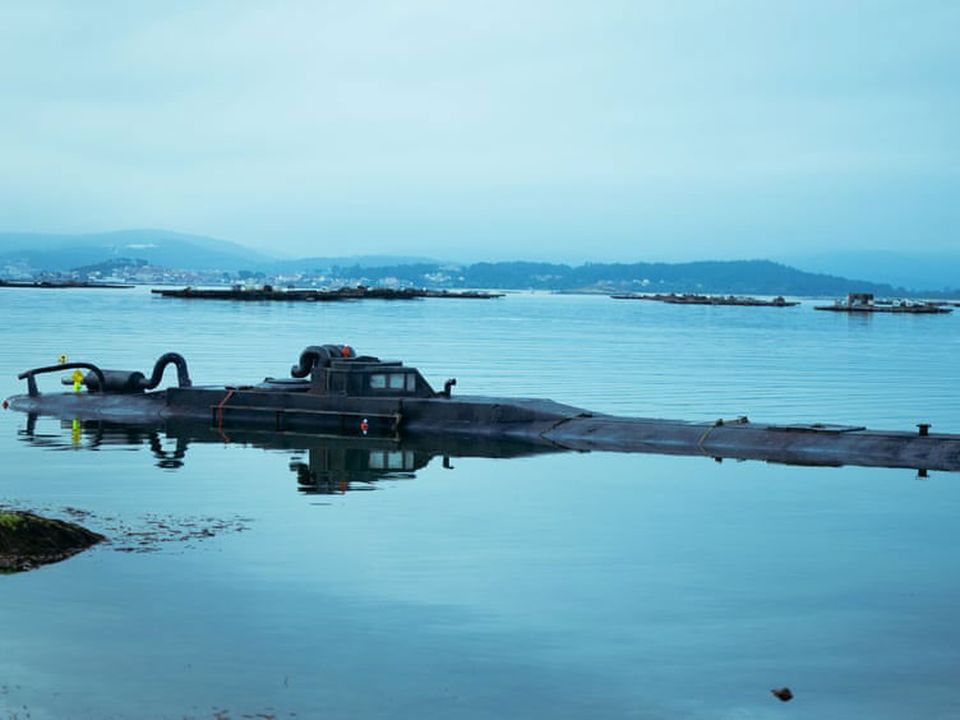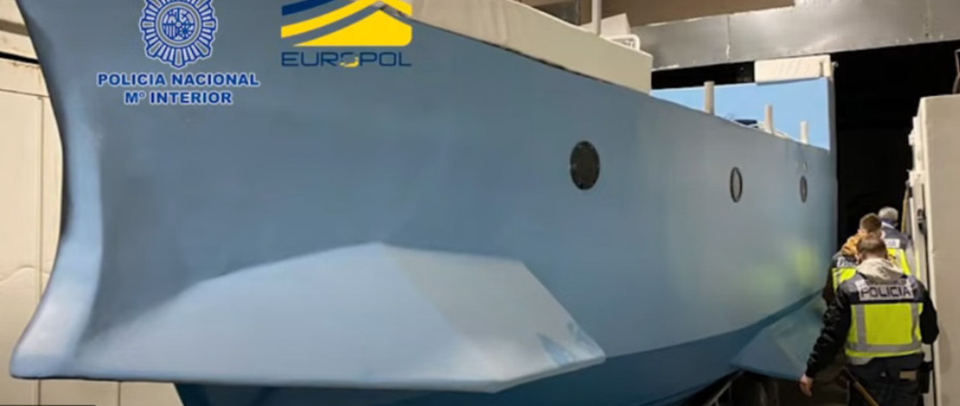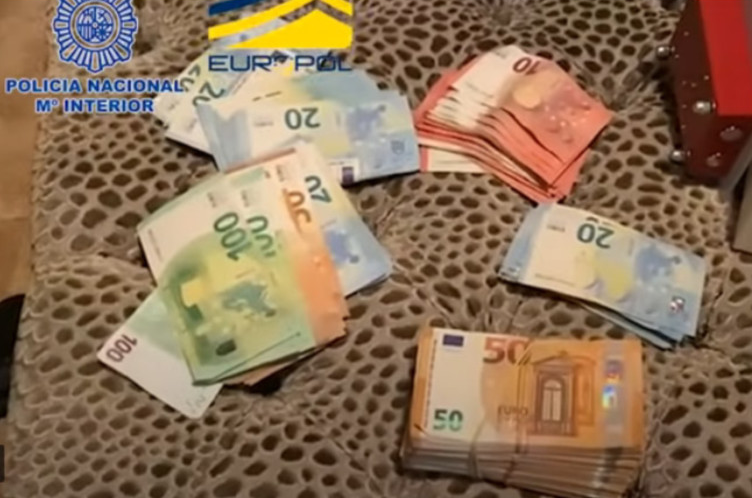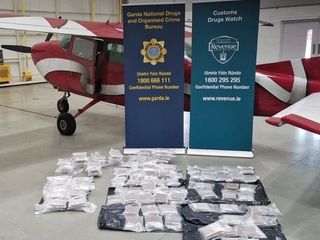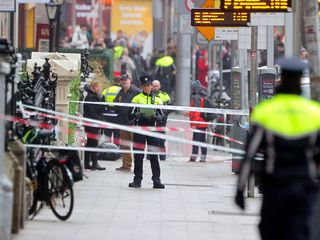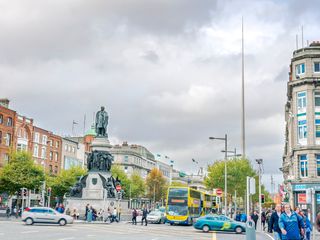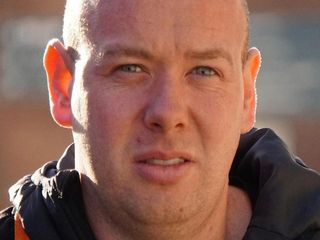Cocaine-stuffed submarines and torture chambers signal arrival of South American cartels in Europe
A narco-sub's epic 27-day journey across the Atlantic underscores the colossal profits to be made by networks such as the Kinahan cartel
Seven men sailed the sub across the Atlantic
Cocaine-laden submarines and sound-proofed torture chambers show drug cartel madness has landed on our shores from South America.
This week 11 men went on trial in Amsterdam for their roles in setting up a gangland prison where it was planned to inflict gruesome torment on their victims.
"We will start when the buses arrive. No mercy," one of the chief suspects texted to another as they readied their plan.
Meanwhile, seven men in Spain are now serving time for sailing a narco-submarine across the Atlantic with three tons of cocaine on board.
Lucky not to drown or suffocate during their 27-day journey, their epic criminal journey underscores the colossal profits to be made by criminal networks such as the Kinahan cartel.
As the submarine crew discovered, there was little thought given to their comfort or safety when it came to making money.
Read more
Agustín Álvarez (31) was jailed for 11 years for steering the semi-submersible narco-submarine carrying 3,068kg of cocaine worth an estimated €123 million from Brazil.
Ecuadorian cousins Luis Tomás Benítez Manzaba and Pedro Roberto Delgado Manzaba also got 11 years behind bars.
Four other Spaniards who conspired with Álvarez to get the sub ashore were jailed for between seven and nine years.
The case made headlines around the world when the 21.5 metre fiberglass sub was deliberately sunk in a Galician cove on November 24, 2019.
Named 'Che', the submarine covered 3,500 miles to become the first full loaded narco-submarine to be discovered in Europe.
The narco-sub travelled 3,500 miles with three tons of cocaine
The story has already inspired a book, a documentary and a drama series telling the story of the crew who had hoped to make a small fortune for their efforts on behalf of the drug lords.
Crime journalist Javier Romero wrote a book, Operation Black Tide, about the case and why the men chose to get involved in such a dangerous and criminal escapade.
At the end of February, a drama inspired by the case, also titled Operation Black Tide, will begin on Amazon Prime. The fictional series will be followed in March by a four-part documentary also on Amazon called Operation Black Tide: The Suicidal Journey.
Initially, mystery surrounded the appearance of the half-sunk submarine on a Sunday morning on the northwest coast of Spain.
It soon emerged that the crew had run out of fuel after two attempts to rendezvous offshore with other boats had failed.
The three crew men had become desperate after their transatlantic journey had taken twice as long as they had planned.
They spent almost a month stuck in a dark, stinking cabin behind three tons of cocaine and 20,000 litres of fuel.
Surviving on energy bars, rice, biscuits and sardines, they used plastic bags as a toilet. Álvarez, a former boxing champion, had resorted to contacting three childhood friends from his home town of Vigo in last ditch bid to successfully land the cocaine.
Their efforts had been wasted from the beginning, with an international operation in place tracing the submarine the entire time and its arrival in Galicia was awaited.
The three crew men were arrested shortly afterwards.
Read more
With the men now serving their time behind bars, the Che is on show at the National Police Academy museum in Ávila.
A second narco-sub has since been discovered in Spain. This one was constructed in Malaga and built to carry three tons of drugs.
Painted sky blue and disguised to look like a yacht above the waterline, police officers who first found it during a drug raid thought it was a carnival float.
While the submarines can be a source of fascination the ultra violence of the infamous Colombian and Mexican cartels is terrifying.
Tortures, mutilation and massacres have become the norm in South America where the vast profits from cocaine have corrupted entire countries.
So when a sound-proofed torture chamber was discovered in the Netherlands it confirmed that this kind of terror had arrived in Europe.
It was part of a complex of seven maritime containers constructed as an underworld prison and ready for use.
The gangsters planned to cut off rivals' fingers and toes and to waterboard them in the hidden torture chamber in a row over money.
Eleven men accused of setting up torture chamber went on trial this week over the gruesome plot.
Well financed operation
Footage of the sinister underground torture chamber in a shipping container made headlines around the world when it was discovered by police in 2020.
Police found the complex of hidden containers after French police cracked the encrypted Encrochat messaging service the gang was using.
Items discovered included scalpels, pliers, scissors, a finger clamp, a claw hammer and a gas burner as well as police uniforms, bulletproof vests, blue flashing lights and a huge freezer with enough room for two people.
According to the Dutch public prosecution service: "Six containers were intended to detain people. They were insulated from the inside and equipped with handcuffs and a chemical toilet.
"The seventh sea container was called the 'treatment room' by suspects, and there was a treatment chair complete with cuffs, belts and straps to bind arms, legs and head."
One of the main suspects texted "they are all going to get their turn sooner or later. How long do they want to hide.
"We will start when the buses arrive. No mercy."
Another replied that while it wasn't normally his area, he hoped he'd "get the chance to torture them."
The prosecution has said: "The suspects had two sites at their disposal, a 'headquarters' in Rotterdam for their 'arrest team' and the site in Wouwse Plantage, which they called 'our EBI'."
The EBI is the Netherlands' high-security prison at Vught where several infamous criminals, including Kinahan cartel associates, are detained.
"What we are witnessing here is the reverse side of the recreational use of cocaine in the Netherlands and neighbouring countries.
"Our society is in danger of getting used to it," the prosecution added.
Judges are expected to deliver a verdict in May after the public hearing came to end this week.

